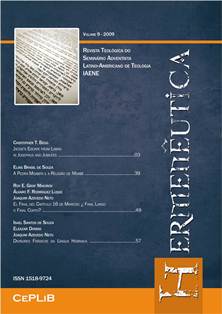A PEDRA MOABITA E A RELIGIÃO DE MOABE
Abstract
RESUMO
Descoberta em 1868, a Pedra Moabita, também conhecida como Estela de Mesa, permanece o testemunho epigráfico mais extenso sobre o antigo reino de Moabe. Este documento de 34 linhas é uma inscrição comemorativa em que o rei Mesa relata suas obras de construção e sua vitória sobre o inimigo israelita da dinastia Omrida, que por algum tempo havia oprimido a Moabe. Embora haja muitos elementos ortográficos, gramaticais e históricos dignos de discussão neste texto, o presente trabalho se limita a identificar e analisar algumas idéias religiosas inferidas da Pedra Moabita para compará-las com a religião normativa de Israel, refletida nos textos da Bíblia Hebraica. Idéias religiosas neste artigo são definidas como conceitos e percepções humanas da divindade ao situar as ações do deus ou deuses no contexto do culto, da terra e da guerra.
ABSTRACT
Discovered in 1868, the Moabite Stone, also known as Mesha Stele, remains the most extensive epigraphic testimony of the old kingdom of Moab. This document os 34 lines is a comemorative inscription on which King Mesha reports his construction works and his victory over the Israelite enemy of the Omride dynasty. Although there are many orthographic, grammatical and historical issues worthy of discussion in this text, the present article limits itself to identify some religious ideas inferred from the Moabite Stone in order to compare them with the normative religion of Israel, reflected in the Hebrew Bible. Religious ideas in this article are defined as concepts and human perceptions of the deity in the context of cultus, land and war.


